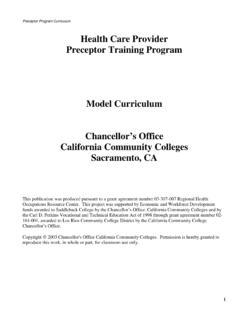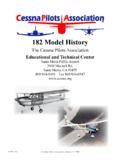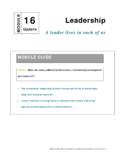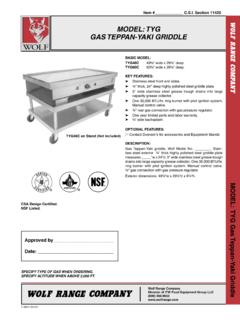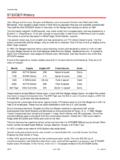Transcription of Updating the Behavior Engineering Model
1 Draft version submitted to Performance Improvement for publication. 1. Updating the Behavior Engineering Model by Roger Chevalier, CPT. It never ceases to amaze me to see the latest cause analysis Model that borrows extensively from the work of Thomas Gilbert without giving him the credit he deserves. Sometimes a new category is added, typically there are some new descriptions, and perhaps even a dash of color, but somehow they forget to acknowledge the body of work they have built on. Sir Isaac Newton said it best when he wrote, If I can see much further, it's because I am standing on the shoulders of giants. We should remember to credit the contributions of those who came before us. The Behavior Engineering Model (BEM) developed by Gilbert and presented in his landmark book, Human Competence: Engineering Worthy Performance (Gilbert, 1978, p.)
2 88), provides us with a way to systematically and systemically identify barriers to individual and organizational performance. The BEM. distinguishes between a person's repertory of Behavior (what the individual brings to the performance equation) and the environmental supports (the work environment factors that encourage or impede performance). Copyright 2002 by Roger D. Chevalier, All Rights Reserved. Draft version submitted to Performance Improvement for publication. 2. Behavior Engineering Model Information Instrumentation Motivation Data Resources Incentives 1. Relevant and frequent 1. Tools and materials of 1. Adequate financial Environmental Supports feedback about the work designed incentives made adequacy of scientifically to match contingent upon performance human factors performance 2.
3 Descriptions of what is 2. Non-monetary incentives expected of made available performance 3. Career-development 3. Clear and relevant opportunities guides to adequate performance Knowledge Capacity Motives Person's Repertory of Behavior 1. Systematically 1. Flexible scheduling of 1. Assessment of people's designed training that performance to match motives to work matches the peak capacity 2. Recruitment of people to requirements of 2. Prosthesis match the realities of the exemplary performance 3. Physical shaping situation 2. Placement 4. Adaptation 5. Selection Figure 1: Behavior Engineering Model , Human Competence: Engineering Worthy Performance, 1978, p. 88. In presenting the Behavior Engineering Model as shown in Figure 1 in the ISPI.
4 HPT Institute Principles and Practices program, we have learned a lot from our students that led us to update the Model . Our work in presenting our program in- house at one high tech company moving from training to performance gave us insight into ways in which the Model could be made more comprehensive as well as scalable from the individual to the organization itself. In the Figure 2, we have adapted some of the terms used by Gilbert to reflect the way we typically speak about performance and numbered them to identify the order in which the causes are identified and remedied. Environment 1. Information 2. Resources 3. Incentives Individual 6. Knowledge 5. Capacity 4. Motives Copyright 2002 by Roger D.
5 Chevalier, All Rights Reserved. Draft version submitted to Performance Improvement for publication. 3. Figure 2: Updated Behavior Engineering Model Cells We have adapted the BEM to provide a more efficient method for troubleshooting performance and for discovering the most important opportunities for improving individual performance. Like the original Model , the updated Model shown in Figure 3 serves as a diagnostic tool for troubleshooting performance problems. It is important to remember that cause analysis does not direct us to the best solutions for correcting the problem, but rather provides a framework for discovering underlying causes. Updated Behavior Engineering Model Information Resources Incentives 1.
6 Roles and performance 1. Materials, tools and time 1. Financial and non- expectations are clearly needed to do the job are financial incentives are defined; employees are present. present; measurement and given relevant and 2. Processes and procedures reward systems reinforce frequent feedback about are clearly defined and positive performance. Environment the adequacy of enhance individual 2. Jobs are enriched to allow performance. performance if followed. for fulfillment of 2. Clear and relevant guides 3. Overall physical and employee needs. are used to describe the psychological work 3. Overall work environment work process. environment contributes is positive, where 3. The performance to improved employees believe they management system performance; work have an opportunity to guides employee conditions are safe, clean, succeed; career performance and organized, and conducive development opportunities development.
7 To performance. are present. Knowledge / Skills Capacity Motives 1. Employees have the 1. Employees have the 1. Motives of employees are necessary knowledge, capacity to learn and do aligned with the work and experience and skills to do what is needed to the work environment. the desired behaviors perform successfully. 2. Employees desire to Individual 2. Employees with the 2. Employees are recruited perform the required jobs. necessary knowledge, and selected to match the 3. Employees are recruited experience and skills are realities of the work and selected to match the properly placed to use and situation. realities of the work share what they know. 3. Employees are free of situation. 3.
8 Employees are cross- emotional limitations that trained to understand each would interfere with their other's roles. performance. Copyright 2002 by Roger D. Chevalier, All Rights Reserved. Draft version submitted to Performance Improvement for publication. 4. Figure 3: Updated Behavior Engineering Model , adapted from The Behavior Engineering Model Human Competence: Engineering Worthy Performance, 1978, p. 88. Using the Updated Model As was the case for the original BEM, the updated Model focuses our attention on the distinction between environmental and individual factors that impact performance. Environmental factors are the starting point for analysis because they pose the greatest barriers to exemplary performance.
9 When the environmental supports are strong, individuals are better able to do what is expected of them. We look to environmental causes first because, in the words of Geary Rummler and Alan Brache, If you pit a good performer against a bad system, the system will win almost every time. (Performance Improvement, 1995, p. 13). The support given by the work environment is divided into three factors that influence performance, information, resources, and incentives. Information includes communicating clear expectations, providing the necessary guides to do the work, and giving timely, behaviorally specific feedback. Resources include ensuring that the proper materials, tools, time and processes are present to accomplish the task.
10 Incentives ensure that the appropriate financial and non- financial incentives are present to encourage performance. These apply to the worker, the work and the workplace. What the individuals bring to the job include their motives, capacity, and knowledge and skills. Individual motives should me aligned with the work environment so that employees have a desire to work and excel. Capacity refers to whether the worker is able to learn and do what is necessary to be successful on the job. The final factor refers to whether the individual has the necessary knowledge and skills to do a specific task needed to accomplish a project or goal. The Model gives us the structure we need to assess each of the six factors, information, resources, incentives, motives, capacity, and knowledge and skills that affect individual and group performance on the job.

